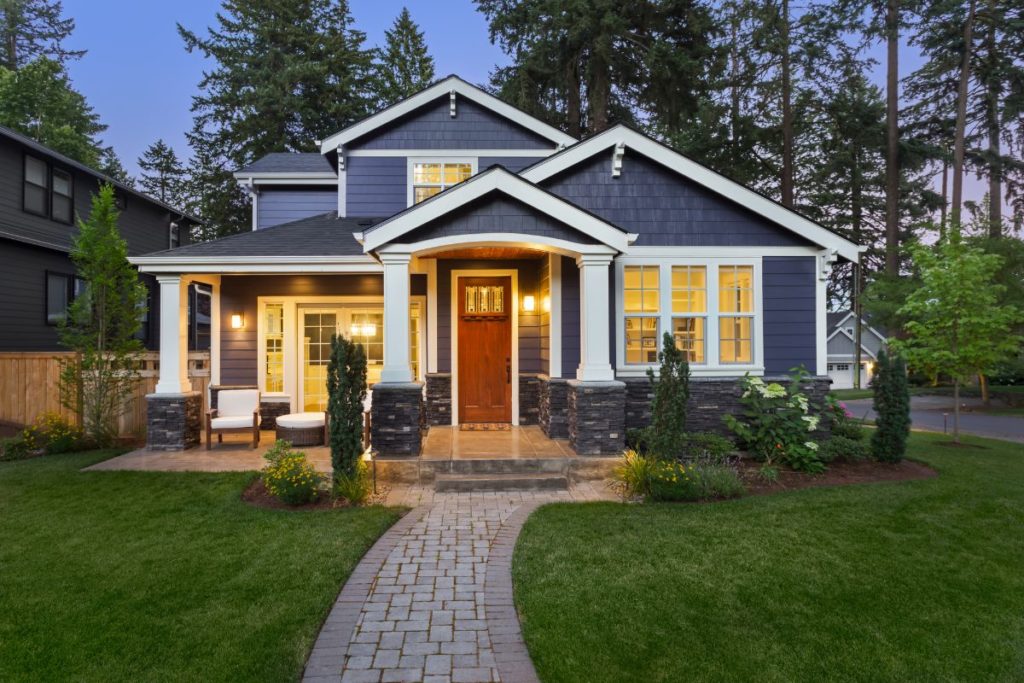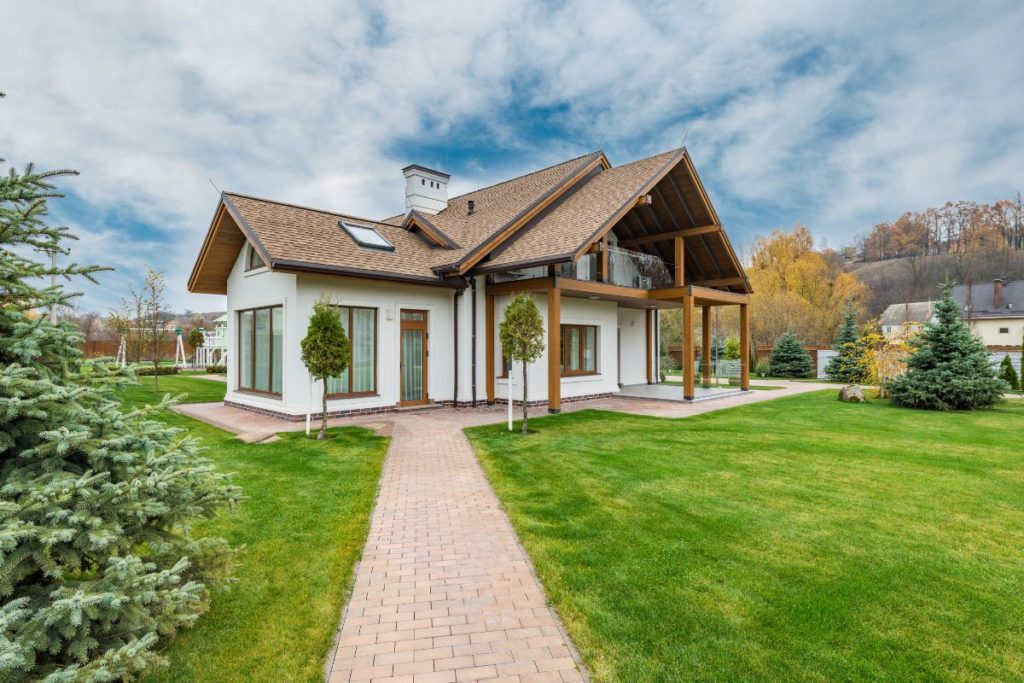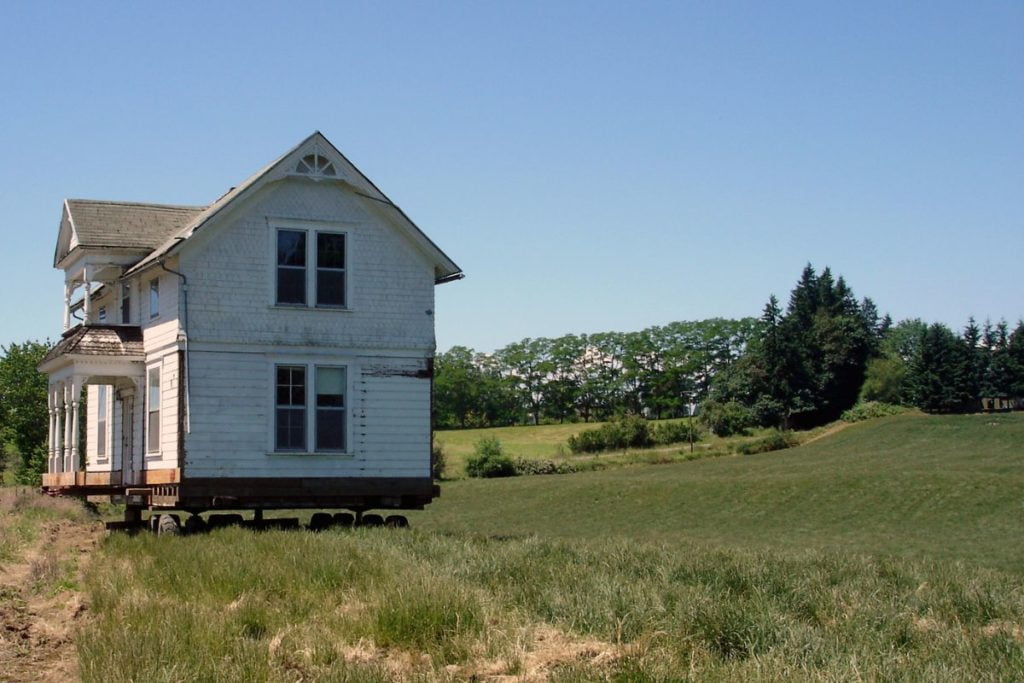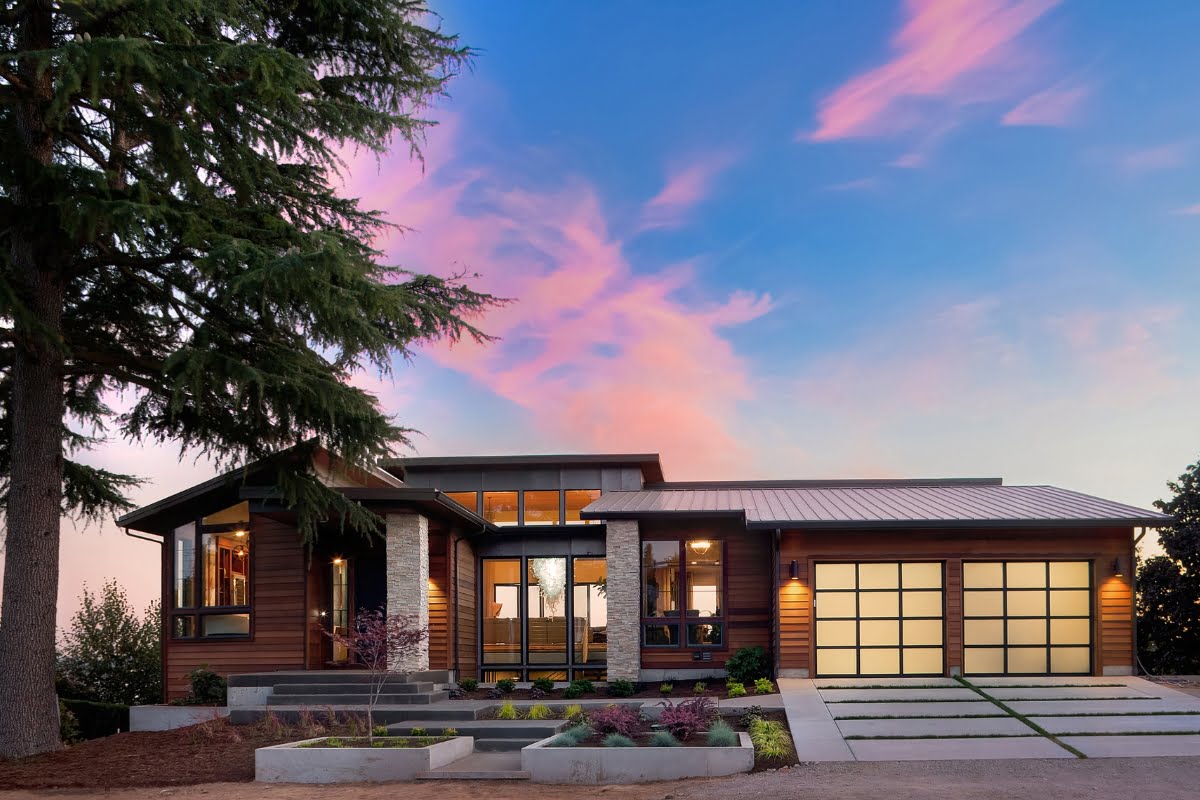A freestanding home, often referred to as a standalone house, is a residential dwelling that stands independently from other structures.
This means the house doesn’t share any walls with neighboring buildings, as with townhouses or apartment complexes. Let’s delve deeper into a freestanding home’s defining characteristics and benefits.
Characteristics of a Freestanding Home

- Independence: The primary feature of a freestanding home is its separate structure. It doesn’t have common walls with adjacent houses, allowing homeowners greater autonomy and privacy.
- Land Ownership: Typically, those who own a freestanding home also possess the land on which it sits. This parcel of land can vary in size but gives homeowners the freedom to landscape, garden, or expand their living space.
- Design Flexibility: Since the house isn’t attached to other structures, homeowners have more leeway regarding architectural choices and renovations. They can modify the home’s facade, expand its footprint, or add features without constraints from neighboring properties.
- No Shared Amenities: Unlike condo complexes or some townhouse communities, freestanding homes usually don’t have shared amenities such as gyms, pools, or common areas. This can be a pro or a con, depending on individual preferences.
Benefits of Owning a Freestanding Home

Owning a freestanding home offers residents unique advantages distinct from other housing types. These standalone structures provide unparalleled privacy, as they don’t share walls with adjacent properties.
Additionally, they typically come with the bonus of land ownership, granting homeowners the freedom to garden, landscape, or even expand their living space. Key benefits include:
- Privacy: The absence of shared walls reduces noise interference and enhances seclusion.
- Customization: Homeowners have the liberty to tailor their space, be it through architectural modifications or exterior designs.
- Land Ownership: Owning the land the house sits on provides opportunities for gardening, expansions, or other outdoor activities.
- Potential for Appreciation: Freestanding homes, especially those on ample land, can be valuable long-term investments.
Pros and Cons of Owning a Freestanding Home
A freestanding home, distinguished by its independent structure and lack of shared walls with neighboring properties, offers a unique residential experience.
While many relish the autonomy and space it provides, owning such a property comes with challenges. Below, we’ve outlined some of the pros and cons associated with owning a freestanding home:
Pros:
- Privacy: With no shared walls, homeowners enjoy a heightened level of privacy, free from noise or disturbances from neighbors.
- Customization Freedom: Owners can modify the exterior and interior, renovate, or expand without the constraints often found in attached housing.
- Land Ownership: Typically accompanied by a plot of land, these homes provide outdoor space for gardening, recreation, or potential expansion.
- Potential Value Appreciation: Over time, freestanding homes, especially those on larger plots, may see a more considerable appreciation in value.
Cons:
- Maintenance Responsibilities: Owners are solely responsible for all upkeep, repairs, and maintenance, both inside and outside the home.
- Higher Costs: Freestanding homes can have higher utility bills due to the lack of shared walls, which can provide some insulation.
- Lack of Shared Amenities: Unlike condos or townhouses, there are no shared amenities like pools, gyms, or security.
- Potential for Isolation: Some might feel isolated without the close-knit community feel of shared housing complexes.
Can You Move Freestanding Homes?

While freestanding homes are generally fixed structures built on a specific plot of land, it’s not unheard of for some houses, particularly smaller or modular ones, to be relocated.
The process, known as house moving or house lifting, involves separating the home from its foundation, lifting it with hydraulic jacks, and then placing it onto large trailers or dollies to be transported to a new location.
Though this endeavor is complex and requires meticulous planning, it might be undertaken for reasons such as land instability, changing land use, historical preservation, or personal preference.
However, the cost, potential damage, and logistical challenges make it essential for homeowners to weigh the pros and cons before deciding to move to a freestanding home.
Are There Any Taxes for Owning a Freestanding Home?

Yes, owners of freestanding homes, like other real estate owners, are typically subject to property taxes. Local or municipal governments levy these taxes to fund public services such as schools, roads, emergency services, and other community infrastructure.
The amount of property tax a homeowner owes is often based on the property’s assessed value, which includes both the land and the house itself.
Several factors can influence the amount of property tax:
- Location: Different municipalities or counties may have different tax rates.
- Property Value: Higher-valued properties typically incur higher taxes.
- Assessments and Reassessments: Local governments periodically reassess property values, which can lead to changes in tax amounts.
- Tax Exemptions and Reductions: Some areas offer tax reductions or exemptions for certain groups, such as senior citizens, veterans, or individuals with disabilities.
It’s crucial for homeowners to stay informed about their property taxes, as rates and assessment methods can vary widely depending on the region or country. Late or missed payments can result in penalties or, in extreme cases, property loss.
FAQs
Answer: Yes, homeowners of freestanding properties are solely responsible for all maintenance and repairs, both interior and exterior. This can lead to higher costs than living in a condo, where association fees might share or cover specific responsibilities.
Answer: Owners are responsible for all upkeep, repairs, and maintenance tasks related to the house and the surrounding property, including lawn care, roof repairs, and other home improvements.
Answer: Yes, one of the advantages of a freestanding home is the flexibility to renovate or extend, provided it adheres to local building regulations and zoning laws.
Answer: The energy efficiency of a freestanding home depends on its construction, insulation, and the appliances installed. However, they might have slightly higher heating or cooling costs than attached homes because of the lack of shared walls.
Answer: The ease of reselling depends on market conditions, the home’s condition, location, and other factors. Freestanding homes in desirable locations with modern amenities often have good resale potential.
Answer: Historically, freestanding homes, especially those on larger plots, have shown appreciable value over time. However, returns can vary based on numerous factors, including market dynamics and property upkeep.

